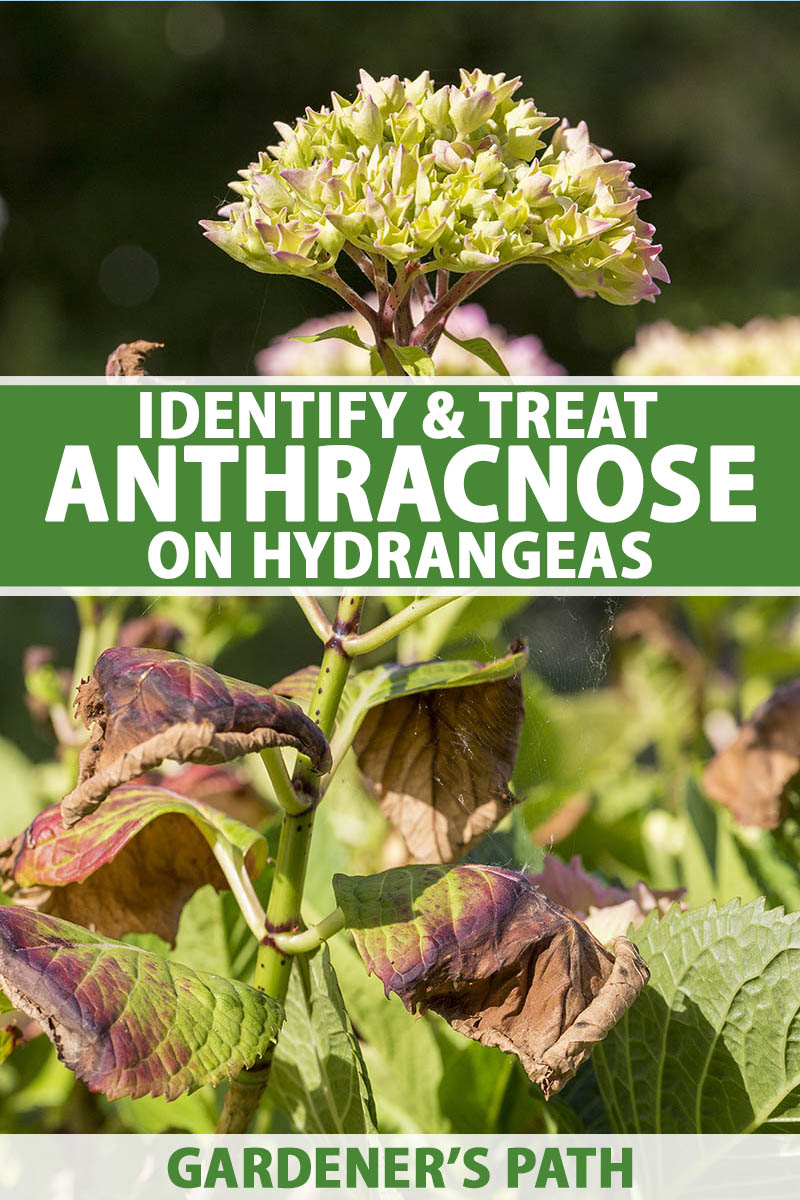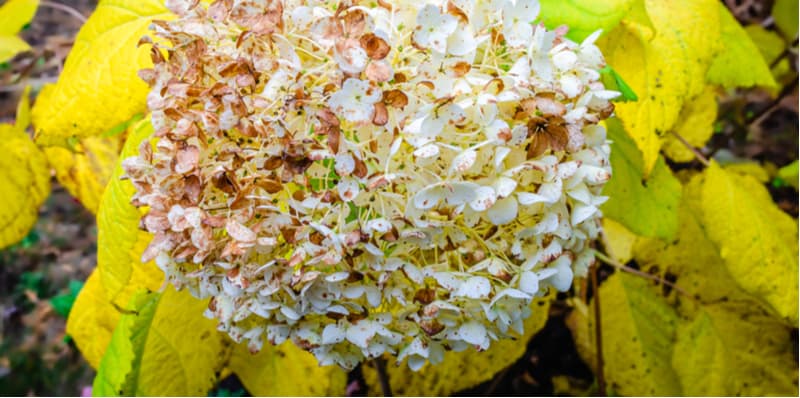5 Simple Techniques For Hydrangea Leaves Turning Yellow
6 Simple Techniques For Hydrangea Leaves Turning Yellow
Table of ContentsFascination About Hydrangea Leaves Turning YellowThe Ultimate Guide To Hydrangea Leaves Turning YellowThe Ultimate Guide To Hydrangea Leaves Turning YellowThe Only Guide to Hydrangea Leaves Turning YellowIndicators on Hydrangea Leaves Turning Yellow You Need To KnowThe Basic Principles Of Hydrangea Leaves Turning Yellow
You can attempt to stop fungal conditions by maintaining your gardens cool and cost-free of debris. Give your gardens an excellent autumn and spring tidy up and remove all ground cover from the ground, along with from within the crown of the plant. These leaves that will certainly remain, waiting to attack in the next growing period.Copper fungicides are, but if they are overused they can end up being hazardous to your plant. Clip the fallen leaves, and eliminate them from the garden.
If they aren't obtaining sufficient water, their fallen leaves will certainly brownish. Hydrangeas have a in the lunchtime sunlight, and recovering as soon as the sun has changed and the plants have some time to recuperate. If this takes place repeatedly you may observe brownish and crispy fallen leaves that are drooping. This is their means of allowing us know that it requires some extra moisture.

The Definitive Guide for Hydrangea Leaves Turning Yellow
Developed plants might need to be watered one to three times per week, depending on your problems. It might appear appealing to spray the fallen leaves down.
Water the base of the plant,. When the plant has actually rebounded, you can return to a routine watering timetable. Many varieties and varieties like partial sun. Panicle hydrangeas love complete sun, however the remainder of the group truly suches as partial shade. Partial color provides regarding 4 to 6 hours of sunlight.
The container must be huge enough so the plant can grow and get all of the water and nutrients it needs. Panicles like the complete sunlight.
Regardless of the variety, plan in advance and make certain your plant has lots of defense from the wind. You can hair transplant to a brand-new place, or you might produce a wind barrier using another plant, or fencing.
The smart Trick of Hydrangea Leaves Turning Yellow That Nobody is Talking About
Ornamental grass, Rose of Sharon, or Holly shrubs are just a few concepts of plants you could make use of to block the wind. If you need to hair transplant, find a place in your yard that is well safeguarded from sunlight and wind. Transplanting is best done in the autumn or the springtime.
Every one of the above situations can take place to any garden enthusiast. Fortunately for all of us, hydrangeas are really durable, and will certainly more than likely recover really promptly with a little love and treatment. The plants area is the most vital aspect when it concerns obtaining recognized and appropriate development. With a little forethought on planting location and proper maintenance, you'll be able to ensure your hydrangeas!.
If Hydrangea leaves turn yellow and drops off later on, it's generally due to overwatering, as the plant can not uptake water and loses the fallen leaves to cut off transpiration. Following this, Hydrangea leaves begin to sag and shrivel. Considering that both conditions can develop yellow leaves, you must detect the difference between the overwatered and underwatered plant.
You can rescue the plant from yellow fallen leaves by supplying it the correct light and placement. If your plant obtains yellow fallen leaves, relocate to a dark location. Place Hydrangea plants inside near an east-facing home window. Dapple the plant with curtains or UV defense sheets to block straight warm.
The Of Hydrangea Leaves Turning Yellow
Remember, Hydrangeas are only frost tolerant in fall and winter as they go dormant, and temperature level changes can trigger yellowing leaves and brownish areas. If it gets too cozy, the edges of the leaves come to be yellow, transform brown and develop a crunchy structure. Relocate your potted Hydrangeas far from drafty north-facing windows in the winter months.
Heavy dirt can quickly block the oxygen supply to the origins and sever the link with the upper components of the plant (fallen leaves). Hydrangea leaves transform their color if they locate minor aggravations in the soil composition. This issue can create the Hydrangea delegates transform yellow, struggle with fallen leave decreases, and make a saggy plant in sync with overwatering.
Yellow leaves in Hydrangeas are the initial indicators of illness problem, typically adhered to by black areas, browning, goes down, and wilting. Separate the unhealthy or pest-infested plant from the healthy plants to dig this stop condition spread. If it is a garden plant, remove all the infected fallen leaves making use of sanitized devices and cleanse up all the debris.
Reducing off aids Hydrangea shade unnecessary weight and protection, allowing the development of brand-new fallen leaves. The best time to prune Hydrangeas is springtime when the plant prepares to grow vegetation for the next season. Check for spent or unhealthy leaves and reduce the base of a stalk that signs up with the fallen leaves and stem.
Hydrangea Leaves Turning Yellow - An Overview
Avoid reducing healthy and balanced or green leaves, and do not get rid of more than 25% of the plant's foliage. The major factor behind the red fallen leaves in Hydrangea is inadequate dirt or environmental conditions.
Also, repot the plant annually in spring or every 2 years if the growth price is slow-moving.
There are 6 primary reasons this could occur:: The plant does not obtain sufficient sunlight.: The roots are either also wet or also dry.: The plant is as well cold.: The dirt is not acidic or alkaline sufficient for the hydrangea.: The plant isn't getting the ideal nutrients it needs to remain healthy.
Each factor impacts the plant in a means that can be taken care of if we understand just how to take care of hydrangeas the appropriate method. When we speak about poor light for hydrangeas, we indicate that the plant isn't obtaining sufficient sunshine. Hydrangeas choose intense light, but not straight, scorching sunlight. They commonly thrive finest with early morning sun and mid-day shade.
The Only Guide for Hydrangea Leaves Turning Yellow
Without sufficient sunlight, the leaves can turn yellow, the plant can become weak, and it might create fewer blossoms. To make sure a hydrangea obtains appropriate light, it should be positioned in a spot where it can delight in the morning light and be safeguarded from the intense afternoon sun. Hydrangea Leaves Turning Yellow. Overwatering is when a hydrangea plant gets more water than it requires

This problem is common in the fall as the weather condition modifications or if a hydrangea is planted in an area where it doesn't get enough warmth from the sun. It is essential to know the best conditions for hydrangeas to avoid low-temperature stress. As an example, most hydrangeas grow ideal in areas 6 to 9, where the environment is milder.
